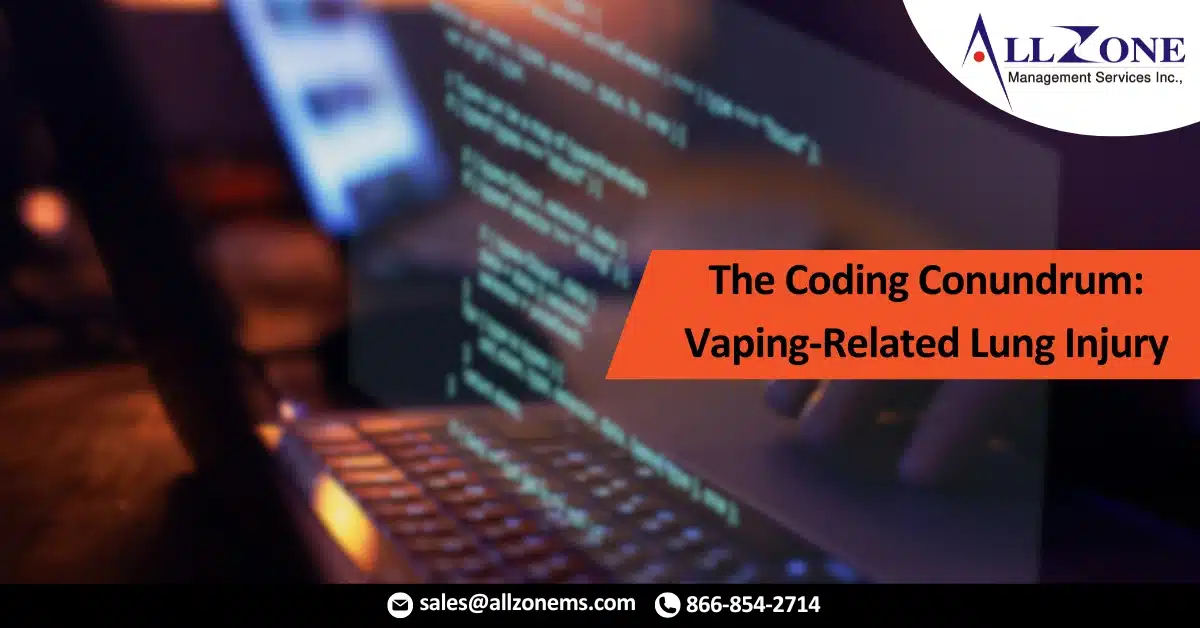Confusion persists for the coding of vaping.
The Centers for Disease Control and Prevention (CDC) is currently investigating vaping-related illnesses that have recently been reported. There are 450 confirmed or suspected cases in 33 states. The first death was reported on Aug. 23, 2019, in Illinois. The concern has escalated to the point that the CDC is asking the public to consider not using vaping products while the investigation is ongoing.
In July-August 2019, five patients in North Carolina were diagnosed with acute exogenous lipoid pneumonia with acute hypoxic respiratory failure, potentially related to e-cigarette use. The signs and symptoms included cough, shortness of breath, chest pain, nausea, vomiting, diarrhea, fatigue, fever, and/or weight loss.
The patients are adults aged 18-35. All patients used an electronic vaping pen, with recent use of marijuana oils or concentrates. Three of the five had also used nicotine e-cigarettes, and two of the patients smoked marijuana or traditional cigarettes. The patients reported purchasing tetrahydrocannabinol (THC) coding of vaping cartridges on the street. All the patients survived, but one was treated with mechanical ventilation.
These patients’ workups included blood counts, computed tomography of the chest, bronchoscopy, and cytology. The treatment for acute lipoid pneumonia is 24-72 hours of intravenous methylprednisone followed by oral prednisone at home.
Patients are at risk if they have vaped in the last 90 days. These patients are typically healthy adults who do not have previous lung disease or infection.
The Food and Drug Administration (FDA) has issued a warning regarding a specific danger for people who vape THC. A review of samples of coding of vaping fluids used by the sick patients revealed THC and vitamin E acetate. The FDA encouraged consumers not to purchase “vaping products on the street, and to refrain from using THC oil or modifying/adding any substances to products purchased in stores.” It should be noted that some of the patients who became ill did not vape THC. There were 53 patients in Illinois and Wisconsin who only vaped nicotine products.
The New England Journal of Medicine is suggesting that doctors should discourage their patients from coding of vaping. If adult smokers are trying to quit smoking, they should consult with their healthcare provider and use proven treatments. The Journal goes on to say that e-cigarettes should never be used by youths, young adults, pregnant women, or adults who currently do not use tobacco products.
The CDC believes that the chemicals are the culprit, but the investigation is ongoing. They are leading the investigation, with cooperation from state health departments. The long-term effects of vaping remain unclear today.
From an ICD-10-CM perspective, the lipoid pneumonia is assigned J69.1 (Pneumonitis due to inhalation of oils and essences). There is a coding instruction that states to assign (T51-T65) to identify the substance. The diagnosis code for inhalation of THC is T40.7X-; the seventh character would identify poisoning type. The coding professional should also capture the use, abuse, or dependence of the substance that is in the e-cigarette.
The use of e-cigarettes is currently being discouraged. If you think that you have a lung illness, you should contact your healthcare provider or call the national poison control center at 1-800-222-1222. If you have shortness of breath that lasts a few hours or becomes severe, you should seek medical attention immediately.
For More Information: https://www.icd10monitor.com/the-coding-conundrum-vaping-related-lung-injury

